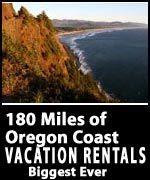Rumors, Odd Facts, Fiery to Tragic History of Oregon Coast Headlands
Published 07/29/22 at 5:05 PM PST
By Oregon Coast Beach Connection staff
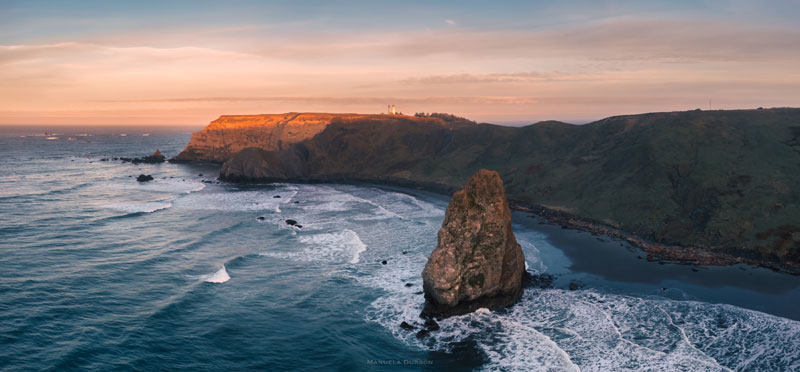
Includes exclusive listings; some specials in winter
In Cannon Beach:
Includes rentals not listed anywhere else
In Manzanita, Wheeler, Rockaway Beach:
Some specials for winter
In Pacific City, Oceanside:
Some specials for winter
In Lincoln City:
Some specials for winter
In Depoe Bay, Gleneden Beach:
Some specials for winter
In Newport:
Look for some specials
In Waldport
Some specials for winter
In Yachats, Florence
Some specials for winter
Southern Oregon Coast Hotels / Lodgings
Reedsport to Brookings, places to stay; winter deals
(Oregon Coast) – Headlands, promontories, outcroppings and simply cool structures that stick out: such things on the Oregon coast have some tales to tell. Some are bizarre origin stories, born in fiery lava flows millions of years ago. Others are rumors getting debunked right here, to how they interact with weather and some eyebrow-raising, even dramatic history. (Cape Blanco courtesy Manuela Durson - see Manuela Durson Fine Arts for more.)
Here's eight things you didn't know about some of your fave spots – well, actually more than eight.
Cape Blanco
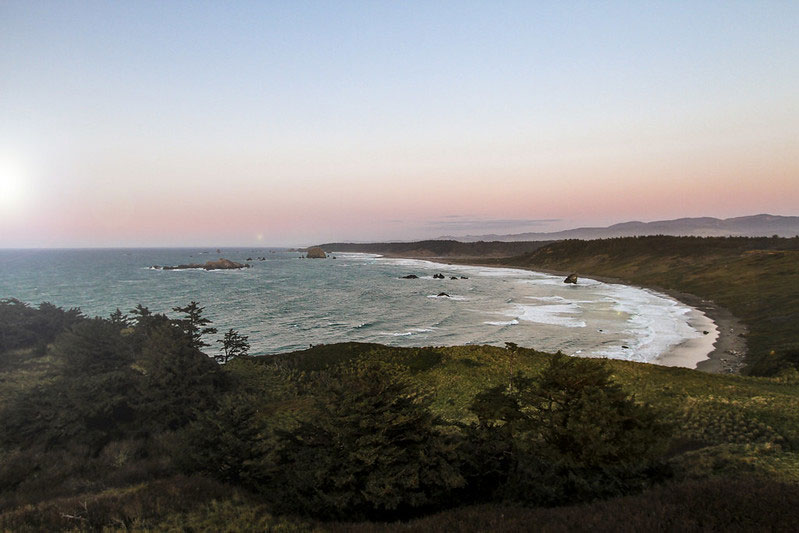
Photo courtesy Bureau of Land Management
The southern Oregon coast hotspot is the farthest west you can go in the lower 48 states – except for one part of the Washington coast. The headland is 245 feet high, but it's part of a large section of Oregon that juts out on its own, then suddenly drops back eastward. So an actual measurement of how far it juts outward is rather difficult to make.
One thing most people don't know how, however, is that it's also a dividing line meteorologically. Weather on the south coast is often different south of here compared to north of here. This actually has more to do with the mountains to the east: to the south they're higher than to the north. This causes a variety of different interactions with winds from the east, helping to enhance the Chetco Effect that often warms up the south coast towns of Gold Beach and Brookings.
It's just as pronounced in winter, where you'll often see marine forecasts different for either side of Blanco. One area is a little wilder while the other side is less so – and it swaps sides. More in How Cape Blanco is a Dividing Line in South Oregon Coast Weather.
Cape Lookout
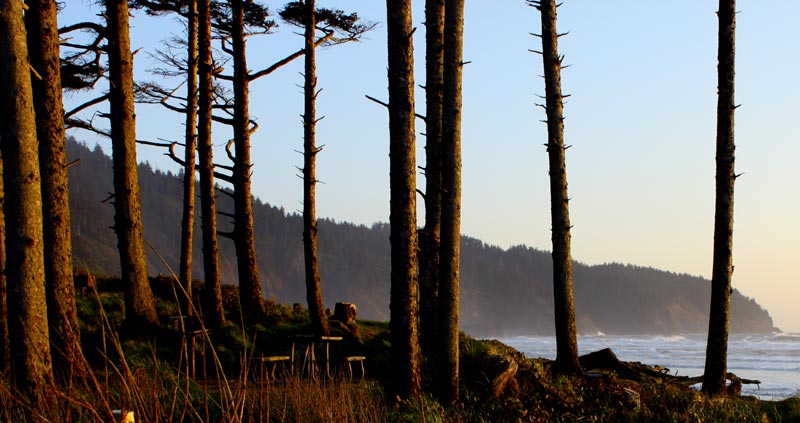
On the north Oregon coast, near Oceanside, Cape Lookout is by far the longest hike to the tip – a good 2.5 miles. But World War II history is an exceptionally cool albeit tragic chapter in this stunning headland.
On August 2, 1943, a bomber on a training run out of Medford crashed into the higher sections of Cape Lookout, leaving only one survivor and a harrowing tale. The pilot lost his bearings here just as foggy weather hit, creating a trail of wreckage some 500 feet long (though none exists today). Flames were seen all the way to Pacific City. Had it been higher by 50 feet, the plane would've cleared the promontory.
It was bombardier Willie Perez who found himself tossed into a tree and stuck there, at one point hanging tenuously over a steep drop off. There were a handful of other survivors and they were much worse off, with most dying on the spot. Others died later.
He was finally rescued after 36 hours. See What Really Happened with the Crashed B-17 Bomber on N. Oregon Coast's Cape Lookout
Oceanside's Maxwell Point
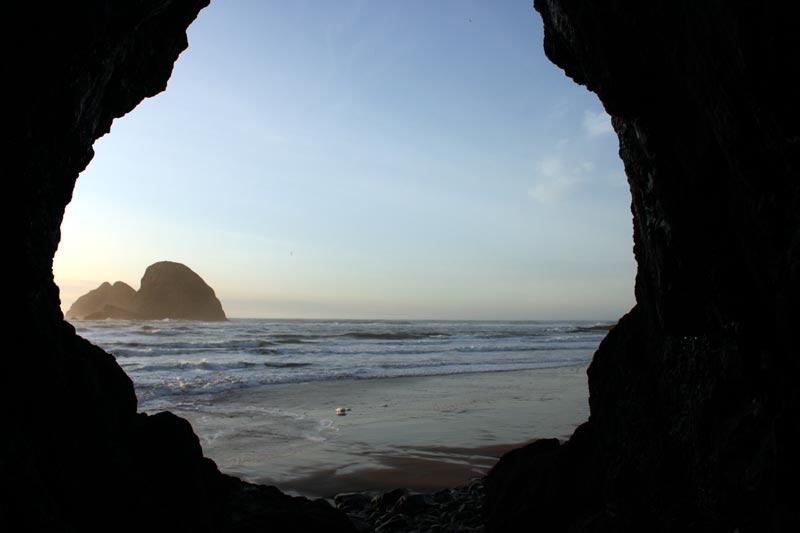
Just now celebrating its 100-year anniversary, Oceanside was named by a pair of brothers named Rosenberg. They also blasted the tunnel out of Maxwell Point, allowing people to still go through to the other side – well, mostly.
The tunnel was blocked for years in the '80s, then finally cleared. Another landslide shut it down for about two weeks in early 2021.
Tillamook Head, Cape Meares Origin Story
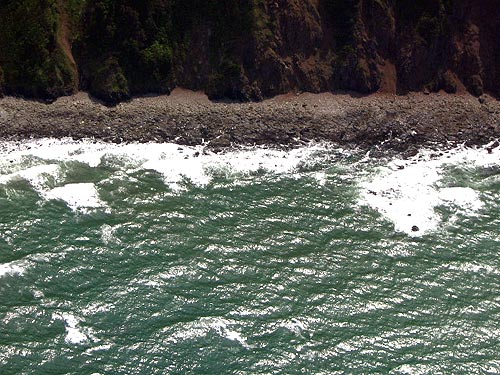
Tillamook Head from the air
Imagine lava flows so enormous they filled gigantic canyons as big as the Columbia Gorge, searing their way a good 300 miles across land and sometimes sea. Then, over millions and millions of years, the outer parts of the canyons erode away and leave giant, black blobs of basalt, which in turn get eroded down more after many more millions of years.
This was the scene in Oregon some 15 million years ago, creating what we now call the Columbia Basalts. It created Tillamook Head by Seaside, Cape Meares, and even Neahkahnie Mountain, down to Newport's Yaquina Head and Seal Rock. See Eerie Doomsday Connection Between Oregon Coast and Yellowstone.
What is NOT a Volcano
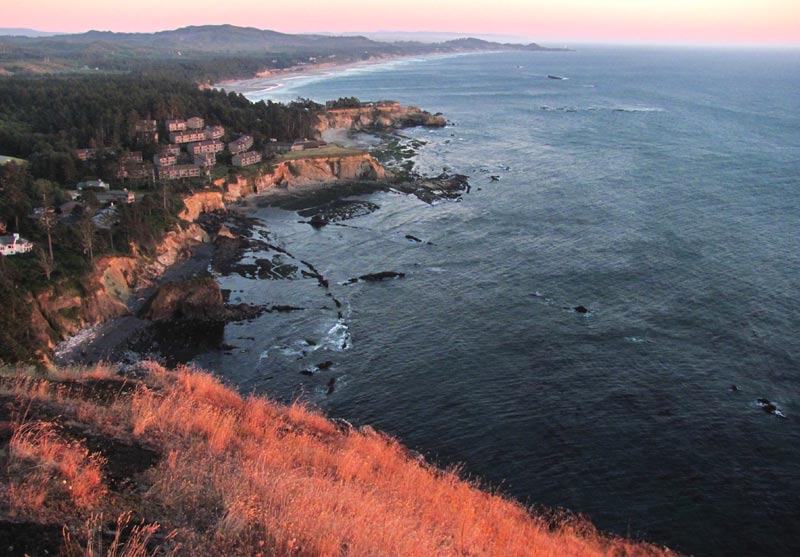
Cape Foulweather
Sometimes, rumors about the geology of a place get more traction than the real story. Some of those include legends that Cape Foulweather around Depoe Bay and Newport's Yaquina Head were once volcanoes. Nope. They're the same fiery origin as the section above: Columbia Basalts.
Cape Perpetua and Cascade Head Were Volcanoes
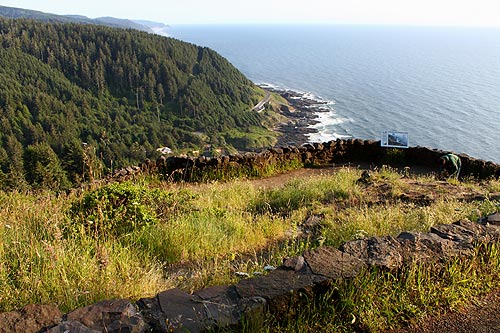
As far apart as they are, Cape Perpetua near Yachats and Cascade Head next to Neskowin were actually underwater volcanoes about the same time: some 36 million years ago. See Extinct Volcano of Oregon Coast: Cascade Head's Fiery Surprise and Yachats Geology: Wonders and Frights of Central Oregon Coast.
Coos Bay's Cape Arago
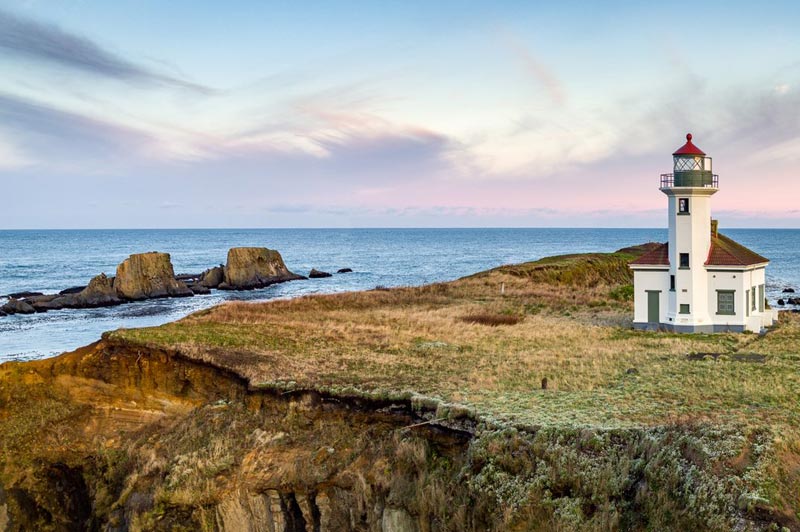
Courtesy Oregon's Adventure Coast
Yes, there was a time when Cape Arago was accessible, when you could get out to the lighthouse. But the region grew a good conscience and gave back what was stolen land, a place actually called Chief's Island by the original inhabitants.
This exchange happened in 2006, though even about 100 years ago local newspapers admitted it was sacred land to the local tribes. Since the 2000s, the bridge to Chief's Island is gone.
Jump-Off Joe's Wacky Tales
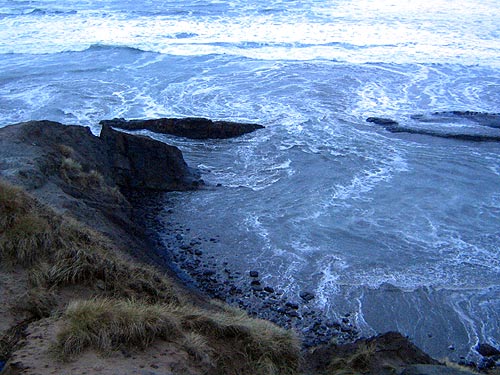
The small Newport promontory in Nye Beach is one of the more fascinating winding tales – the latest chapter of which includes it no longer being accessible because the outcropping fell apart in the last two years.
What most people don't know is there were two structures called Jump-Off Joe: one was famous in the early 20th century but fell apart by the '30s. A second outcropping got the name – the current one – and that one was cut up considerably over the decades as well.
Yet somehow, someone got away with building a real estate development there, which turned into one of the most spectacular failures really fast. See The Crazy, Hazy Tale of a Spectacular Oregon Coast Real Estate Failure
Oregon Coast Hotels in this area - South Coast Hotels - Where to eat - Maps - Virtual Tours
Cannon Beach Lodging
Nehalem Bay Lodgings
Manzanita Hotels, Lodging
Three Capes Lodging
Pacific City Hotels, Lodging
Lincoln City Lodging
Depoe Bay Lodging
Newport Lodging
Waldport Lodging
Yachats Lodging
Oregon Coast Vacation Rentals
Oregon Coast Lodging Specials
More About Oregon Coast hotels, lodging.....
More About Oregon Coast Restaurants, Dining.....
KEYWORDS: Cape Blanco farthest west, Oregon coast volcano, Oregon geology, Eight Things You Did Not Know About Oregon Coast Headlands, south Oregon coast headlands



















































